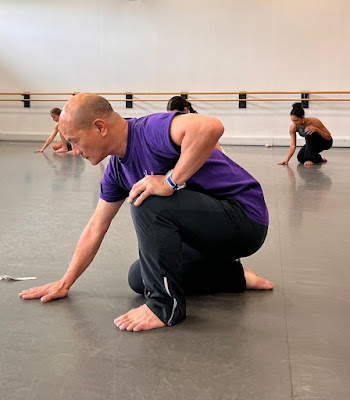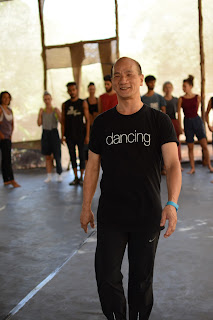I will start this post pointing out that there are a huge number of available resources online about ballet instruction. Sorting through them all might be daunting, and this blog is no substitute for the enterprising teachers and entrepreneurs who have created amazing content to be available online. Maybe reading my thoughts will point you towards looking up such resources available from master teachers like, Finis Jhung (https://finisjhung.com/) or Dance Masterclass (https://www.dance-masterclass.com/). These are just a couple of the better resources I have found online as I research my thoughts. And still, I advocate that nothing beats the chance to work with a teacher in a studio as you learn and practice ballet as a discipline, as an art, as emotional therapy, as physical exercise.
Ballet works hard to "give us a leg to stand on!" And when we watch dancers perform feats of amazing strength, balance, and coordination, it can feel completely beyond our imagined abilities. But beautiful dancers offer us images to hold in our minds as we envision what our bodies might feel like doing the same thing. Each ballet step starts with the most basic human mechanics of our bodies. And learning to place our awareness on bringing those mechanics together into action, is a primary goal of building solid basic technique.
 |
| Me in Paul Taylor's "Dandelion Wine" from 2001. Photo: Lois Greenfield |
Standing on one leg can sometimes be a challenge, whether you want to hop or just to balance as you put on a pair of pants one leg at a time without sitting down. How we distribute our weight on one leg often determines what our other leg can do as well as how our upper body and arms are used in relation to the "working" leg.
Starting classes standing next to a "barre" for support allows us to build strength on our standing leg, while learning how to move our "active" leg and what that does to our upper body. The "barre" is our "partner" on whom we can lean or just gently hold onto as we find our balance, standing on one leg! And then we can enjoy, if only for a second, the sense of accomplishment that comes with a harmonious balance on the smallest point of contact with the ground. Repeatedly finding this balance or sustaining it for more than a moment or two, is where the work comes in to build strength and security in returning to that balance..
The above clip is the very last minute of a five minute variation for Princess Aurora where she has had progressive phrases of steps (enchaînement) in which she demonstrates longer and longer sustained balances and turns on one leg.
Similarly, at the end of a long solo in Paul Taylor's "Dust" is another display of beautiful balance and control on one leg.
Sometimes it is hard to imagine just how many years of practice and training it can take to achieve these short moments of artistic beauty. Life is often filled with working tirelessly to achieve balance with more moving parts than we can control. In those fleeting moments when everything does come into balance...




%20-%20Young,%20Chen%20See.jpg)

















